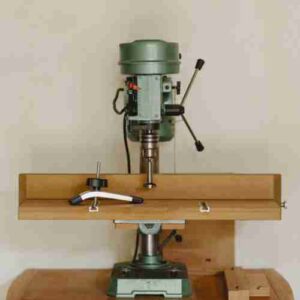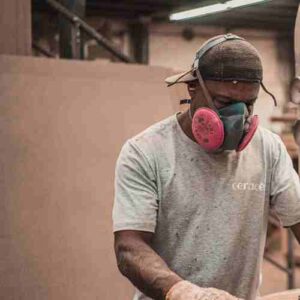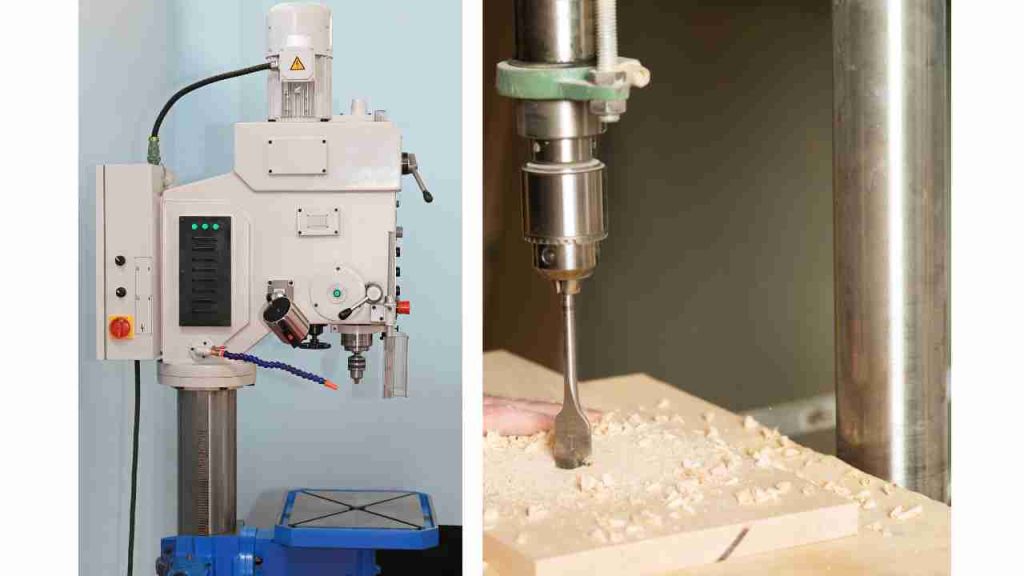You’re working on a woodworking or metalworking project when you find your trusted drill press isn’t tall enough to fit the materials you’re using. Isn’t it frustrating? Don’t worry; we’ve got your back! In this blog article, we’ll walk you through raising your drill press to handle larger-than-life jobs with simplicity and accuracy.
We’ll provide some practical ideas and techniques to help you boost your drill press game—literally—whether you’re a seasoned DIYer or just starting in your workshop adventures. Now, grab your tools and start expanding your drill press’s capabilities!
 Assessing Your Needs:
Assessing Your Needs:
- Project specifications:
- Examine the sorts of projects you usually work on or want to work on in the future.
- Identify the maximum thickness of the materials through which you will be drilling.
- Consider any unique applications or processes needing more height, such as drum sanding or mortising.
2. Workplace Restrictions:
- Examine the available space in your workspace to ensure that a higher drill press can fit.
- Consider the height of your workstation or any other surfaces you may utilize with the drill press.
- Consider any overhead clearance difficulties that may impact the height of your drill press, such as shelving or lighting fixtures.
3. Assessment of Existing Drill Presses:
- Examine your present drill press to see whether it can be readily adjusted or if a new one would suit your requirements.
- For information on height modifications or accessories that may raise the height, see the manufacturer’s specs and user manual.
- Examine your drill press for indicators of wear or damage that might compromise its stability or performance when adjusted.
DIY Solutions for Making Your Drill Press Taller:
1. Adding a Drill Press Extension:
A. Building a Wooden Platform:
- To increase the base of your drill press, build a robust, flat wooden platform.
- To avoid wobbling or instability, ensure the platform is built of high-quality materials and firmly anchored.
- For increased security, attach or fasten the drill press to the platform.
B. Using Metal Extensions:
- Metal extensions that connect to the base of your drill press may be purchased or made.
- Check that the extensions are intended to retain the weight and stabilize the drill press firmly.
- Install the extensions according to the manufacturer’s instructions or your unique design, then secure the drill press.
2. Customizing the Drill Press Table:
A. Creating a Taller Table:
- Replace the current drill press table with a higher, custom-made table that offers more clearance.
- Select tough materials, such as oak or metal, to guarantee the table can sustain drilling pressure.
- Attach and position the new table to the drill press column properly, ensuring it stays level and secure.
B. Adjusting the Table Height:
- If your drill press table is adjustable, release the locking mechanism and slide it higher to the appropriate height.
- Double-check that the table is level and firmly fastened to minimize accidents or uneven drilling.
3. Modifying the Drill Press Column:
A. Replacing the Column with a Taller One:
- Buy or make a higher column to fit your drill press model.
- Carefully remove the drill press, install the new column, and reassemble the machine.
- Verify that the new column is properly secured and that the drill press remains stable.
B. Adding a Column Extension:
- Purchase or make a suitable column extension for your drill press using metal tubing.
- Disassemble the drill press head and secure the extension to the current column’s top.
- Reassemble the drill press head, ensuring the extension is securely fastened and the drill press sturdy.
 Safety Precautions and Best Practices:
Safety Precautions and Best Practices:
- Ensuring Stability and Rigidity:
- Ensure any changes or additions to your drill press do not compromise its general stability and stiffness.
- Check the drill press after adjustments to verify that no wobbling or instability might jeopardize the machine’s safety during operation.
- Properly Securing the Drill Press to the Base:
- If you’re raising the drill press with a wooden platform, metal extensions, or another means, be sure it’s firmly connected to the base.
- Anchor the drill press using bolts, clamps, or other necessary fasteners to prevent movement or tipping during operation.
- Testing the Drill Press after Modifications:
- Before utilizing the modified drill press for any tasks, ensure it works properly and safely.
- Before beginning your projects, inspect the drill press for misalignments, vibrations, or other problems that may influence its performance.
- Using Appropriate Safety Gear:
- While using or modifying a drill press, always use appropriate safety equipment such as safety glasses, hearing protection, and gloves.
- Following safety recommendations and wearing adequate personal protection equipment may prevent accidents and injuries.
- Keeping the Workspace Clean and Organized:
- Working with a drill press requires a clean, well-organized workstation to ensure safety and productivity.
- To reduce the chance of accidents or distractions during your work, keep tools, supplies, and other objects properly kept and conveniently accessible.
- Following the instructions and guidelines provided by the manufacturer:
- Before making any changes or adjustments to your drill press, always check the user manual and follow the manufacturer’s guidelines.
- Following the manufacturer’s instructions will help keep your drill press’s integrity and safety while attaining the necessary height increase.
Frequently Asked Questions (FAQs):
1. Can I increase the height of any drill press, or are there limitations?
While most drill presses can be modified to some extent, it’s essential to check the manufacturer’s guidelines and specifications before making any adjustments. Some drill press models may have limitations or may not be suitable for height modifications.
2. Will making my drill press taller affect its stability and performance?
If done correctly, increasing the height of your drill press should not compromise its stability or performance. Ensure that any modifications or additions are securely fastened and maintain the drill press’s rigidity to prevent wobbling or instability during operation.
3. Are there any risks involved in modifying the drill press myself?
As long as you follow proper safety precautions, have a good understanding of the drill press components, and adhere to the manufacturer’s guidelines, modifying your drill press should not pose significant risks. However, if you’re unsure about any aspect of the modification process, consult a professional or experienced DIYer for assistance.
4. Can I buy ready-made height extensions for my drill press?
Some manufacturers offer height extension kits or accessories specifically designed for their drill press models. Check with the manufacturer or search online for compatible extensions. Alternatively, you can create custom extensions or platforms using high-quality materials and a suitable design.
5. How much should I increase the height of my drill press?
The ideal height increase depends on your specific needs and the type of projects you plan to work on. Assess the maximum thickness of the materials you’ll be drilling and consider any unique applications requiring more height. Ensure that the increased height still fits within your workspace and allows for safe operation.
6. Can I revert my drill press back to its original height after modifications?
Yes, in most cases, you can revert your drill press back to its original height by removing any added extensions or platforms and reassembling the machine according to the manufacturer’s guidelines. Ensure that all components are properly secured and the drill press is stable before using it again.
Final Words:
Increasing the height of your drill press does not have to be a difficult operation. You can easily raise your drill press to handle bigger tasks and materials by carefully analyzing your demands and selecting the best DIY solution. To guarantee the best possible outcomes, always emphasize safety and stability while adding a drill press extension, altering the table, or adjusting the column.
We hope this tutorial has given you useful insights and recommendations that will allow you to confidently push your drill press to new heights. Recall that a higher drill press is an investment in the adaptability of your workshop and your capacity to undertake a larger variety of jobs.

We’d love to hear about your experiences and any further suggestions you may have, so please leave them in the comments box below. Happy drilling!
- Where are WEN drill presses made? - April 2, 2023
- Where are Rikon drill presses made? - April 1, 2023
- Where are Powermatic drill presses made? - April 1, 2023






